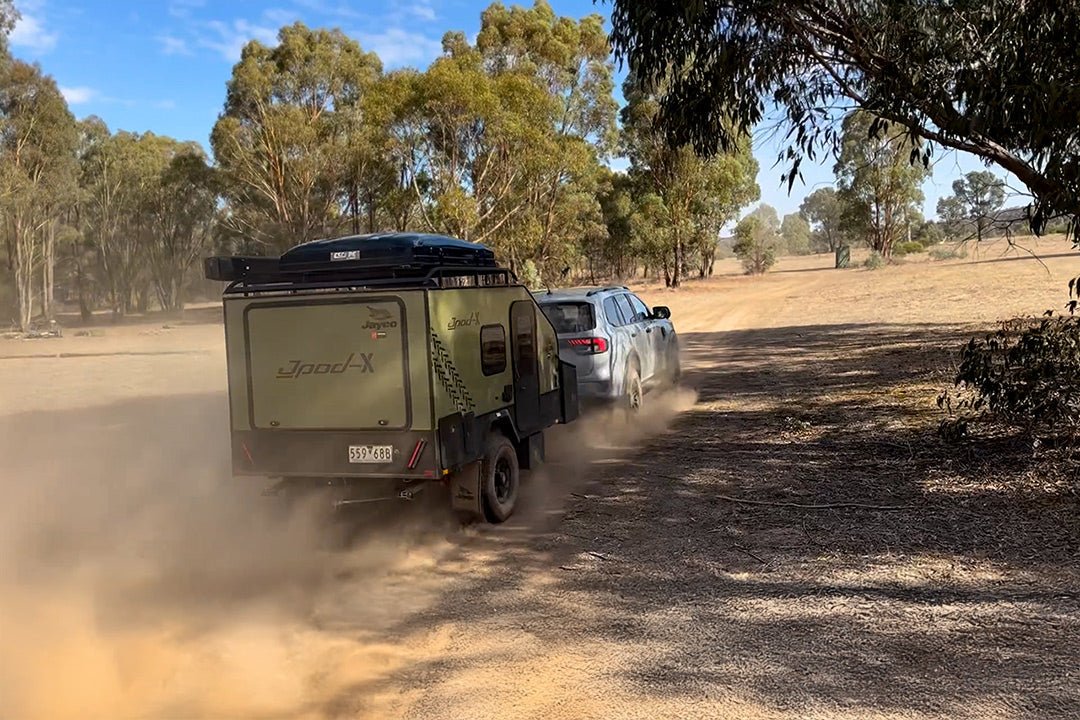DC-DC battery chargers explained
When you start talking 12V electronics, I reckon half the audience switches off and the other half starts digging fox holes, ready for war.
The fact is, 12V electronics are confusing. It is supposed to be about 12V, but the batteries need around 14.4V to charge, are considered 100 per cent charged at 12.8V and only 50 per cent charged at 12.2V.
The confusion is compounded by various battery chemistries, all with different charging regimes and characteristics, and the fact that what works for one vehicle’s setup might not in another vehicle.
Then there’s cable size, assessed in at least four different ways, and a steady flow of new technology. So there’s little surprise vanners wanting to optimise their electrical systems but, beset by conflicting and confusing information, shy away hoping what they already have will do.
BATTERIES
For the purposes of this article, we’ll refer to the batteries in our caravans as house batteries and those in tow vehicles as cranking batteries.
Like all batteries, these supply electricity for our lights, fridges, chargers and other electrical appliances. We can do this off the vehicle’s alternator while driving, off mains power, or via some third form, such as solar or generator, when off the grid.
Our house batteries are (or should be) different to cranking batteries. The former are designed to deliver relatively low levels of electricity over a long period. The most common house batteries are lead acid (deep-cycle), absorbed glass matt (AGM), gel, calcium and now lithium.
House batteries are rated by amp-hours (Ah) – the theoretical capacity to deliver ‘x’ amount of amps in an hour. In a 100Ah battery, for example, this equals 100A for one hour or 5A per hour for 20 hours. In practice, we shouldn’t do that, because discharging a storage battery completely (except lithium) can shorten its life. The manufacturer-recommended level is usually 50 per cent (when the voltage reads 12.2V), though AGMs will survive happily down to 30 per cent (11.85V).
This means that, in a house battery system with one 100Ah battery, you have 50-70A maximum capacity.
CHARGING
Some travellers rely on a cable connection from their vehicle’s alternator-based charging system, with an Anderson plug to connect it at the hitch point. However, while it is possible to fully charge a battery off an alternator, because the rate of charge declines as the voltage in thebattery approaches that of the charging system, it rarely exceeds about 70 to 75 per cent, even after a full day’s driving. And because our house batteries are at the end of 8-10m of cable, along which you will get voltage drop, that can be even less.
So our 100Ah deep-cycle battery that ran down to 50Ah after a few days’ use may only return to 70Ah for our next night’s camp, leaving us with a nominal 20Ah of useable capacity (70Ah minus our 50Ah minimum charge).
Fuel efficient low (or variable) voltage alternators found in modern 4WDs compound the issue, producing as little as 13.8V compared to 14.4V produced in earlier generation vehicles. There’s even talk of switching off the alternator once the cranking battery is deemed ‘fully charged’.
So what can we do?
BASIC SETUP
Many factors can assist. Firstly, limit losses by:
- using decent-sized cable from the alternator to the house battery (minimum 6B&S/13.5mm² – that’s close to a pencil in diameter) and replace any of the 6mm cable usually offered
- using genuine Anderson plugs (not cheap clones, usually sold as ‘Anderson-style’ plugs)
- crimping and soldering all connections.
- Secondly, install a DC-DC charger adjacent to the house battery.
DC-DC CHARGERS
A DC-DC charger is effectively a smart-charger for your 12V system. It isolates the house battery system from the alternator, so that the vehicle’s computer management system sees it as something like a set of lights. At the same time, it boosts the charge at the house battery from as little as 9V back up to 14.4V (or higher, if required) to maximise charging capacity, delivering it in stepped form, like your smart mains charger, achieving close to 100 per cent charge after a day’s driving.
Most DC-DC chargers also act as solar regulators, relocating what’s traditionally been a separate item on your solar panel to a better position – adjacent to the house battery. And these are no ordinary regulators, but maximum power point trackers (MPPT) that optimise your solar panels’ performance.
Most DC-DC chargers draw a higher rate of amperage from the alternator than would be supplied if you let the alternator ‘push’ down the cable. This can be up to 40A or more per hour, quickly replenishing the house battery system.
Complete battery management systems (BMS) are new to the market and incorporate a mains charger, a DC-DC charger and MPPT solar regulator.
These generally come with a high-tech battery monitoring panel and, while expensive, are simple to install, requiring no post-manufacturer wiring between multiple units.
DC-DC chargers benefit from 6B&S/13.5mm² cabling (the conductor, not the conductor plus insulation, which is how most cable is sold). They work with smaller cable, but as the voltage drop through smaller cable increases, the heat produced reduces its conductivity, forcing the charger to work harder, drawing more current and increasing heat. This can continue to the point where the demand exceeds the alternator’s capacity to supply. The energy dissipates as heat is wasted.
Installing the charger near the house battery overcomes much of that voltage drop, while adhering to the manufacturer-recommended minimum clearance assists in dissipating heat.
DC-DC chargers increase the likelihood of your batteries arriving in camp at close to a full charge, minimises damage to your house battery system from over discharging and, in my opinion, should be fitted as mandatory or at least offered as an option on every camper and caravan sold in Australia.
OUR ASSESSMENT
None of the units featured here were tested by us, as it would have demanded repeated wiring of the same battery system. We interpreted manufacturer-supplied figures and relied on the opinions of experienced installers.
When choosing a system, look for a good range of operating temperature, a good waterproof and dust (IP) rating, solar regulating capacity, adaptability to a wide range of battery chemistries and a wide range of input voltages.
The IP rating is a measure of a unit’s resistance to external intrusion, the higher the number the more resistant it is to the ingress of dust and water. The first number refers to dust, with 6 the highest standard, and the second to waterproofing, with 8 as fully submersible to 1m of water.
The full feature appeared in Caravan World #542 October 2015.







